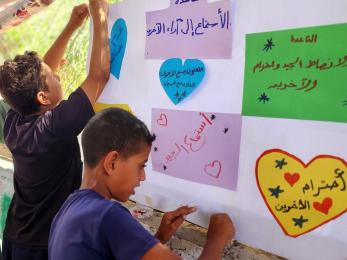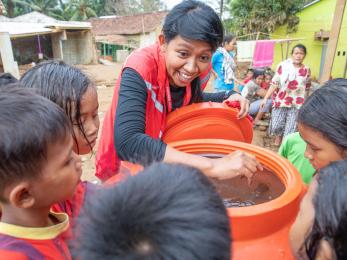The facts: What you need to know about famine
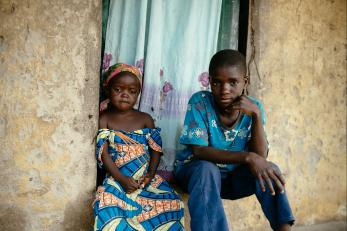
The world is facing one of the largest food crises in over 70 years, with an estimated 76 million people in need of emergency food assistance.
For more than 30 million people in Nigeria, Somalia, South Sudan and Yemen severe hunger is a daily reality.
For some, the risk of starvation is even greater. More than 20 million people in northeastern Nigeria, South Sudan, Somalia and Yemen are at immediate risk. Since late 2016, conditions in northeast Nigeria indicate that famine has occurred and might be ongoing. In South Sudan, famine occurred in early 2017 and risk of future famine is still high, and in Somalia and Yemen, there is also a high risk of famine in 2020. Without immediate support, 1.4 million of those at imminent risk of death are children.
Unfortunately, this is not the first time that some of these areas have experienced famine. And the threat of famine persists, as needs remain high due to prolonged conflict and drought. We’re acting fast to ensure that hungry families get the support they need.
Get the facts about what famine is, and find out how you can help:
What is the definition of famine?
The simplest definition of famine is an extreme shortage of food. But the devastation it brings causes more than just hunger.
For a hunger crisis to be considered serious enough to be defined as a famine, certain specific criteria need to be met. Famine is declared in an area when one in five households or more lack adequate food and other basic needs and acute malnutrition is greater than 30 percent — meaning people are underweight and unable to access and eat enough nutritious food.
In these situations, starvation and death are evident. By the time a famine has been declared, people are already dying of hunger: There are two deaths per 10,000 people every day, or four child deaths per 10,000 children every day.
“What gets complicated is that if you don’t have the data, famine can’t be classified,” says Kate McMahon, Mercy Corps food security advisor. “That means famine could be in many places right now, but without this data it can’t be declared.”
How is famine different than hunger?
Famine is the most disastrous form of widespread hunger. While famine must meet the criteria listed above, hunger is considered by the United Nations to be undernourishment that lasts at least one year where people are unable to consume enough food to maintain a healthy weight and continue necessary physical activity.
When did the food crisis start?
FEWS NET (Famine Early Warning Systems Network) announced that famine likely occurred in Nigeria, and might be continuing in inaccessible areas of Borno State, in mid-December of 2016. Starting in January 2017, famine was listed as a possibility in South Sudan, Somalia and Yemen. In February of 2017, famine was declared in two counties of Unity State in South Sudan. While South Sudan is no longer technically experiencing famine, some people are reportedly still experiencing catastrophic conditions resulting from widespread hunger. All four countries continue to face credible risk of famine this year.
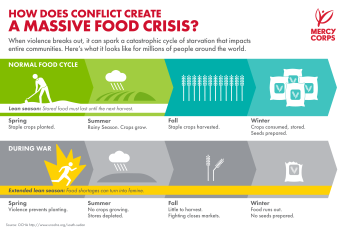
What causes famine?
Nigeria, Somalia, South Sudan and Yemen are all dealing with a complexity of disruptive events such as drought, conflict or social unrest, and high food costs. Historically, all have been plagued by decades of poverty, poor health and lack of basic infrastructure, including healthcare and education.
According to the United Nations, conflict will be the primary driver of continuing food security emergencies in 2020. The debilitating conflicts in each country have forced many people to flee their homes. Farmers are unable to plant crops on their land and agricultural production has declined drastically. Further, families cannot always access the food they need without encountering people with weapons who stand between them and their basic necessities — and that’s if markets stay open. During conflict, many local markets shut down entirely, cutting people off from their primary sources of food.
Climate patterns and climate change also play into famine, as well. La Niña has brought extreme weather conditions to the same areas ravaged by El Niño last year, with the opposite effect in each place: areas that faced drought are now facing flooding, and vice versa. Both are detrimental to farmers and the many people who rely on them. It’s possible that these conditions will get worse as climate change intensifies, making famine even more likely.
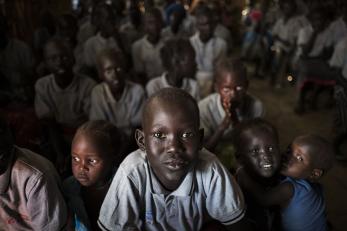
When was the last major famine?
The last major famine occurred between 2011 and 2012 in the Horn of Africa and primarily affected the countries of Somalia, Ethiopia and Kenya. At its peak, more than 13 million people were in need of emergency assistance. Low rainfall paired with rising inflation and armed conflict made food and water scarce across the region.
In Somalia alone, almost 260,000 people died over the course of the famine. About half of them were children under the age of 5.
How is the current hunger crisis different from the 2011 famine?
It’s bigger. 13 million people were at risk last time — this time the number has increased to more than 20 million people across Nigeria, Somalia, South Sudan and Yemen who are at immediate risk of hunger and hunger-related consequences.
Who is the most vulnerable when famine strikes?
People who already lack adequate food are at the greatest risk when famine occurs. Among them, children and pregnant and nursing women are the most vulnerable. While children need sustenance to grow their bodies and pregnant and nursing women need to sustain their children, sometimes families choose to first provide food to the primary wage earner.
"There’s food out there in the world, but we must have the will and the money to get it to people."
Kate McMahon, Mercy Corps food security advisor
What happens to people in famine-affected areas?
In famine-affected areas, millions of people are malnourished and in desperate need of food and water. Millions are on the move in search of these resources, along with pastures where they can keep their livestock or fields where they can grow new crops.
People are skipping meals in order to make their food last longer, particularly mothers who have hungry children to feed. Some might only eat every other day. The weakest and most malnourished among them are dying.
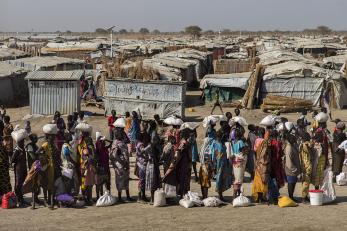
How bad is this food crisis?
13 million people were at risk of famine during the 2011 to 2012 Horn of Africa crisis. More than 20 million people are at risk during this current hunger crisis — and the most vulnerable are children.
-
In northeast Nigeria, there are over 2.6 million people facing severe food insecurity in the conflict-affected Adamawa, Borno and Yobe states. If these communities do not get humanitarian support, that number is projected to skyrocket to 3.6 million during the lean season, which lasts from June to August.
-
While South Sudan is no longer technically experiencing a famine, some 47,000 are reportedly still facing catastrophic conditions, and an estimated 6 million people are facing acute food insecurity. More than 1.3 million children under 5 are expected to be acutely malnourished in 2020, including nearly 292,000 children who face the imminent risk of death if they aren’t reached with assistance.
-
In 2019, Somalia had a 68 percent decrease in crop yield, paired with the worst harvest ever recorded. As a result, over 6.3 million people across Somalia are at risk of acute food insecurity and over 178,000 children are projected to be at risk for severe acute malnutrition.
-
Yemen is currently facing the largest food security emergency in the world. Over 17 million people, just over half of Yemen’s total population are experiencing crisis-level food insecurity, and are expected to continue to experience crisis-level or worse food insecurity in 2020. 383,000 children across Yemen are experiencing severe acute malnutrition, whose symptoms are exacerbated by lack of healthcare infrastructure and conflict.
Why can’t people get more food?
Even though there is enough food being produced to feed every person on Earth multiple times over, there are a variety of reasons that people in famine-affected areas can’t simply get more food.
There is either not enough food available to them due to high costs, or the people who produce food have been somehow prevented from growing their crops because of issues like lack of resources or usable land due to climate change. In Somalia, South Sudan, Yemen and Nigeria, conflict has also forced people to leave their homes, making food security even more volatile.
“One of the big challenges to responding to a famine is resource,” says McMahon. “There’s food out there in the world, but we must have the will and the money to get it to people.”
What are the most urgent needs for people affected by famine?
People need food and water most urgently.
“We are at a tipping point. The point we’re at now — where people are already experiencing emergency levels of food insecurity — means that their situation is already really bad. We have to act now."
Kate McMahon, Mercy Corps food security advisor
What do people in famine-affected areas do to survive?
People in hunger and famine-affected areas begin by skipping a meal or two a day — they may eventually eat food every other day in order to make it last longer. Mothers in particular might choose to feed their children instead of themselves.
To find food, families might forage for wild plants, roots, leaves and even bark to eat boiled. Some might be able to hunt or fish if they have the necessary tools. They all live from day to day, hoping for more food tomorrow.
What will happen if the famine continues?
If the famine continues, more people will suffer from hunger and malnutrition — and the most vulnerable among them will die of starvation. Widespread death in these areas will occur. In places where famine is already taking place, there are two deaths per 10,000 people every day.
“We are at a tipping point,” says McMahon. “The point we’re at now — where people are already experiencing emergency levels of food insecurity — means that their situation is already really bad. We have to act now."
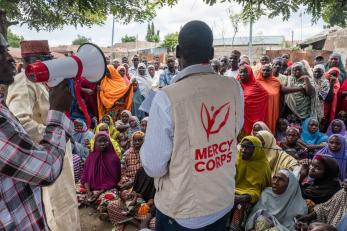
How is Mercy Corps helping?
We’re already on the ground in Nigeria, South Sudan, Somalia and Yemen, providing urgently needed items like food, water and sanitation supplies. If possible, we deliver aid in the form of cash assistance so that families can buy the items they need most and improve the economy by introducing more cash into local markets and businesses.
Our team members are working hard to ensure that we can help as many people as possible. From giving vouchers to families for buying the essentials to offering nutrition classes, we are focused on mitigating hunger and improving conditions for these suffering populations.
We’re also helping to address the root causes of famine so that situations like these don’t happen again. Our work in resilience has shown promising evidence that a long-term approach to dealing with food insecurity strengthens communities and protects them from threats like famine.
As the number of people in need increases, we need your help now more than ever to provide them with critical resources.
